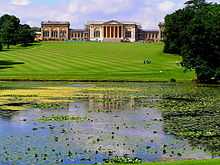Simon Brown, Baron Brown of Eaton-under-Heywood
| The Right Honourable The Lord Brown of Eaton‑under‑Heywood Kt PC | |
|---|---|
 | |
| Royal coat of arms of the United Kingdom | |
| Justice of the Supreme Court of the United Kingdom | |
| In office 1 October 2009 – 9 April 2012 | |
| Monarch | Elizabeth II |
| Preceded by | Position created |
| Succeeded by | Lord Carnwath of Notting Hill |
| Lord of Appeal in Ordinary | |
| In office 13 January 2004 – 30 September 2009 | |
| Preceded by | The Lord Hobhouse of Woodborough |
| Succeeded by | Position eliminated |
| Lord Justice of Appeal | |
| In office 1992–2004 | |
| High Court Judge | |
| In office 1984–1992 | |
| Personal details | |
| Born | Simon Denis Brown 9 April 1937 |
| Nationality | British |
| Spouse(s) | Jennifer Buddicom |
| Alma mater | Worcester College, Oxford |
| Occupation | Judge |
| Profession | Barrister |
| Military service | |
| Service/branch | |
| Years of service | 1955-57 |
| Rank | |
| Unit | Royal Artillery |
Simon Denis Brown, Baron Brown of Eaton-under-Heywood, PC, (born 9 April 1937) is a British lawyer and former Justice of the Supreme Court of the United Kingdom.
Early life

The son of Denis Baer Brown and Edna Elizabeth Brown (née Abrahams), Brown was born on 9 April 1937.[1] He was educated at Stowe School, an independent school in Stowe, Buckinghamshire.[2]
He undertook National Service in the Royal Artillery from 1955 to 1957. He was commissioned on 24 March 1956 as a second lieutenant.[3] He was transferred to the Regular Army Reserves of Officers on 29 July 1957, thereby ending his active service.[4] He was promoted to lieutenant on 7 January 1961. [5]
He graduated from Worcester College, Oxford and was called to the Bar at the Middle Temple in 1961, having been Harmsworth Scholar.[1] From 1979 to 1984, he was a Recorder and First Junior Treasury Counsel (Common Law). In 1980, he served as Master of the Bench at the Middle Temple.
Judicial career
Brown was appointed a High Court Judge in 1984 and assigned to the Queen's Bench Division, receiving a knighthood on his appointment. He became a Lord Justice of Appeal, a judge of the Court of Appeal of England and Wales, in 1992 and was made a Privy Counsellor in the same year. He was Vice-President of the Civil Division from 2001 to 2003. In 2004, he was appointed a Lord of Appeal in Ordinary, and therefore became a life peer with the title Baron Brown of Eaton-under-Heywood.[6] He and nine other Lords of Appeal in Ordinary became Justices of the Supreme Court upon that body's inauguration on 1 October 2009.
In 2011, Brown gave a concurring judgment in R v Gnango[7] in which he stated that "[t]he general public would be astonished and appalled if in those circumstances the law attached liability for the death only to the gunman who actually fired the fatal shot."[8] The decision of the Supreme Court and Brown's judgment in particular were criticised by former Lord Justice of Appeal the Rt Hon. Sir Richard Buxton QC and Dr Jonathan Rogers, Senior Lecturer in Laws at University College London, for tenuous reasoning in an attempt to mollify public opinion.[9][10]
Personal life
He has been married to Jennifer Buddicom since 31 May 1963; they have two sons and one daughter Hon Benedict, Hon Daniel and Hon Abigail.
References
- ↑ 1.0 1.1 "BROWN OF EATON-UNDER-HEYWOOD". Who's Who. Oxford University Press. December 2009. Retrieved 25 July 2009.
- ↑ "Simon Denis Brown, Baron Brown of Eaton under Heywood". thePeerage. Retrieved 5 November 2006.
- ↑ The London Gazette: (Supplement) no. 40772. p. 2692. 4 May 1956. Retrieved 16 August 2013.
- ↑ The London Gazette: (Supplement) no. 41142. p. 4642. 2 August 1957. Retrieved 16 August 2013.
- ↑ The London Gazette: (Supplement) no. 42243. p. 83. 3 January 1961. Retrieved 16 August 2013.
- ↑ The London Gazette: no. 57180. p. 591. 16 January 2004.
- ↑
- Regina v Armel Gnango [2011] UKSC 59 (14 December 2011)
- ↑ BBC News, "Conviction reinstated over New Cross crossfire murder", BBC News Online, (14 December 2011)
- ↑ R. Buxton, "Being an accessory to one's own murder", Criminal Law Review, (2008), no. 4, pp 275-281
- ↑ J. Rogers, "Shooting (and judging) in the dark?", Archbold Review, (2012), 1, pp 8-9